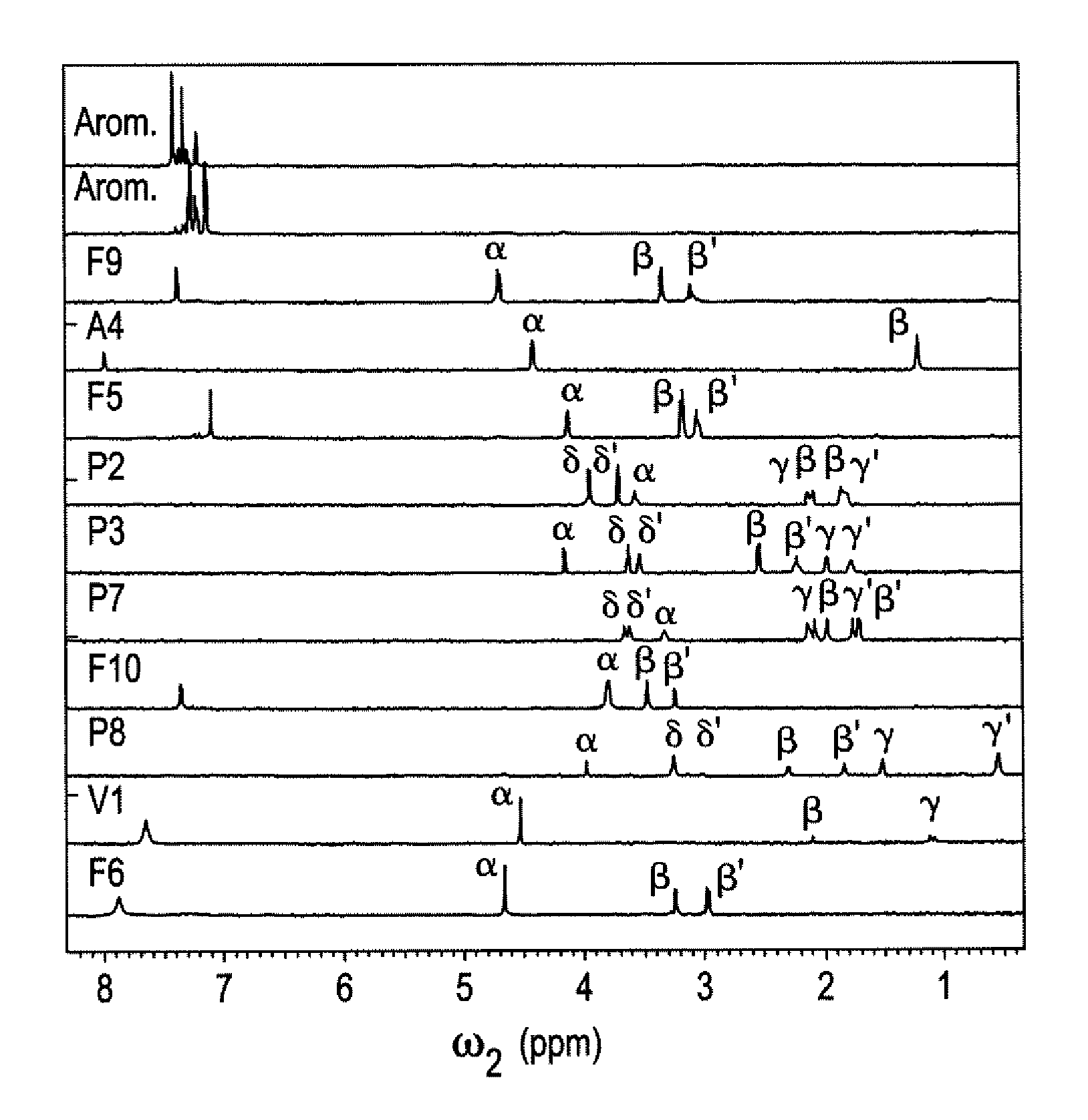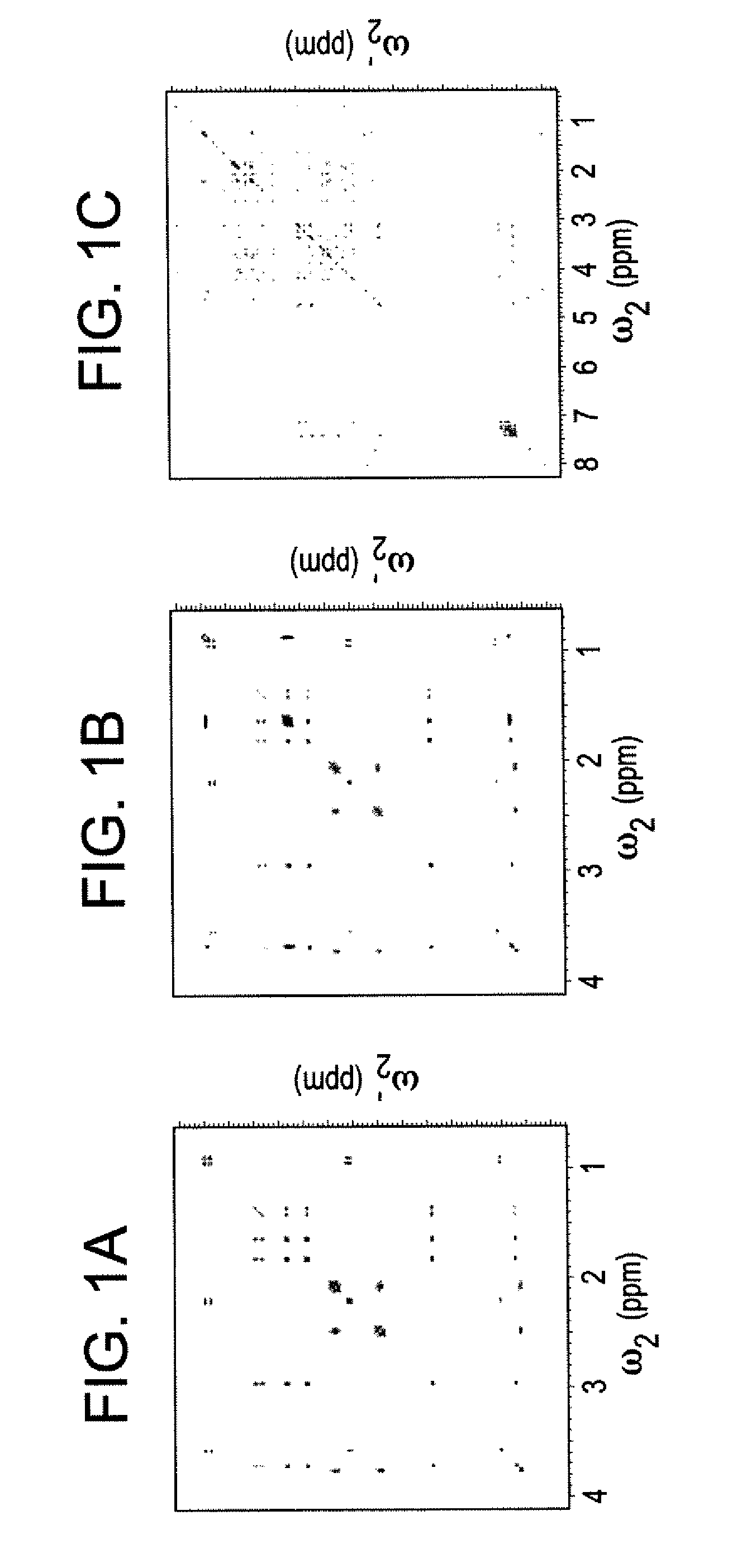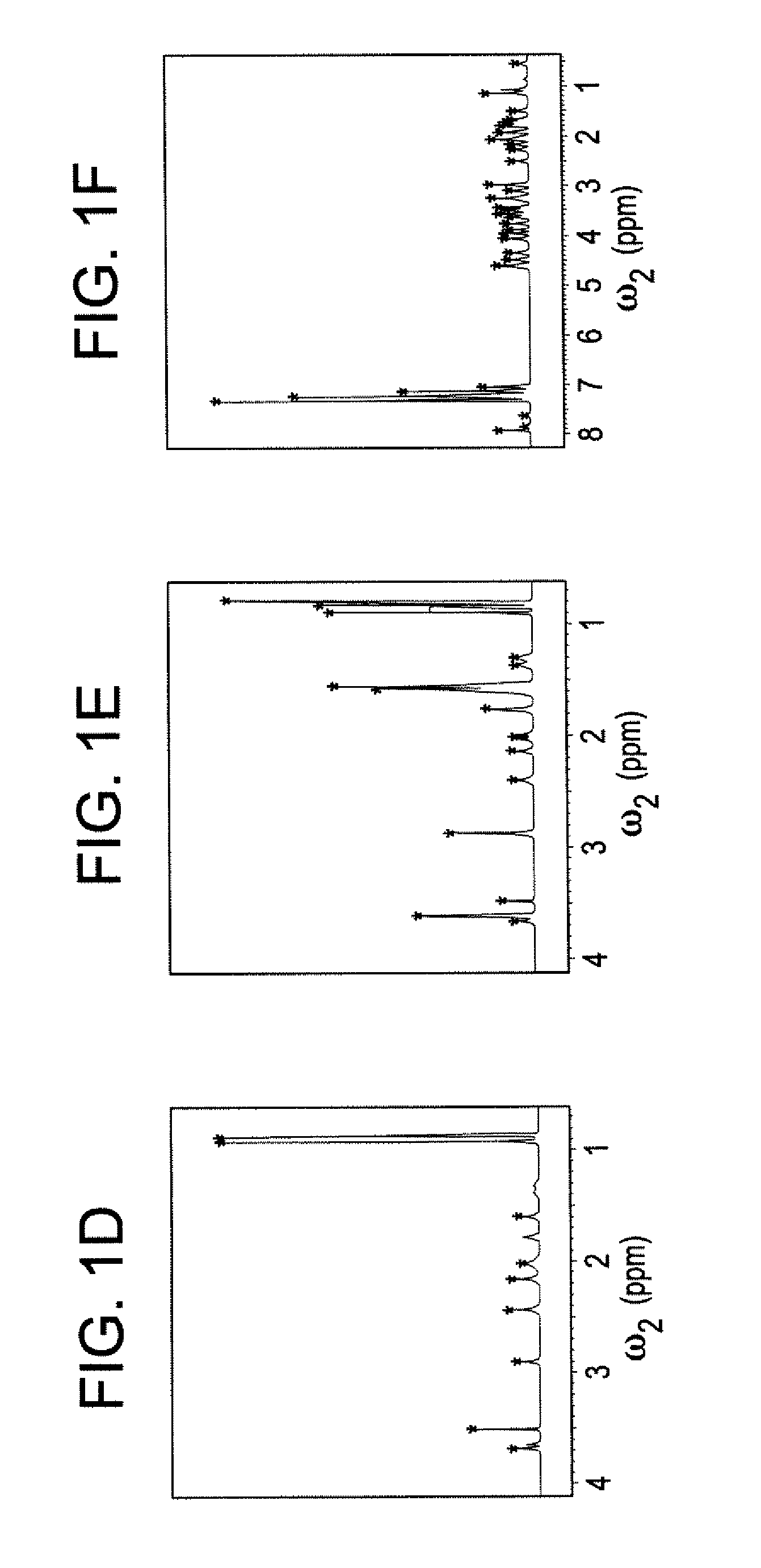Robust deconvolution of complex mixtures by covariance spectroscopy
a covariance spectroscopy and complex mixture technology, applied in chemical methods analysis, nuclear magnetic resonance analysis, instruments, etc., can solve the problems of complex mixture identification, complex mixture identification, and significant challenge of assigning to known compounds, and important progress is being made in potentially laborious and costly ways
- Summary
- Abstract
- Description
- Claims
- Application Information
AI Technical Summary
Benefits of technology
Problems solved by technology
Method used
Image
Examples
examples
[0045]The DemixC method was demonstrated using three samples of variable complexity. Sample I consisted of the 3 amino acids Glu, Lys, and Val dissolved in D2O. Sample II consisted of the 4 amino acids Glu, Leu, Lys, and Val in D2O. The amino acid concentrations of both Samples I and II was 7 mM. Sample III contained the cyclic decapeptide antamanide [-Val-Pro-Pro-Ala-Phe-Phe-Pro-Pro-Phe-Phe-] dissolved in deuterated chloroform at a concentration of 1 mM. Wieland & Faulstich, Crit. Rev. Biochem. 5, 185 (1978). While the dissolved peptide of Sample III was not an actual mixture, in terms of its proton NMR properties it behaved like a mixture of 10 amino acids at 1 mM concentration each. The low variability of the amino acid composition (4 phenylalanines and 4 prolines) leads to significant resonance overlap, providing a rigorous test case for the performance of the method.
[0046]Two-dimensional TOCSY experiments for Samples I and II were recorded at 600 MHz with mixing times (τm) of 9...
PUM
| Property | Measurement | Unit |
|---|---|---|
| Nuclear Magnetic Resonance Spectroscopy spectrum | aaaaa | aaaaa |
| spectrum | aaaaa | aaaaa |
| covariance processing | aaaaa | aaaaa |
Abstract
Description
Claims
Application Information
 Login to View More
Login to View More - R&D
- Intellectual Property
- Life Sciences
- Materials
- Tech Scout
- Unparalleled Data Quality
- Higher Quality Content
- 60% Fewer Hallucinations
Browse by: Latest US Patents, China's latest patents, Technical Efficacy Thesaurus, Application Domain, Technology Topic, Popular Technical Reports.
© 2025 PatSnap. All rights reserved.Legal|Privacy policy|Modern Slavery Act Transparency Statement|Sitemap|About US| Contact US: help@patsnap.com



